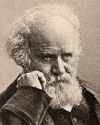
On 18 Aug 1868, while in India, observing a solar eclipse, Pierre Janssen discovered the first evidence of an unknown element. He identified a previously unknown bright yellow line in the spectrum of the chromosphere of the sun. Janssen, an eminent French astronomer, spent a lifetime engaged in the study of the sun and the information that could be gained from its spectrum. He made the first photographs of the granular structure of the Sun's surface.
To better observe the light and to reduce the effect of the earth's atmosphere, even late in his life, he resolved to have an observatory built high on Mont Blanc. To overcome the restrictions of his age, to make the climb, he had the physical assistance of a dozen guides.
Another problem to overcome was how to establish a two-story structure building on a base of snow. The solution designed, and more details of his accomplishments are given in The Observatory On Top Of Mont Blanc, an article from McClure’s Magazine (1894).

On 18 Aug 1990, B.F. Skinner died, the American psychologist whose pioneering work in experimental psychology remains significant. He promoted behaviorism, shaping behavior through positive and negative reinforcement. To investigate the learning processes of animals, he observed their behaviour in a simple box with a lever which, when activated by the animal, would give a reward (or punishment). The reward, such as pellets of food or water, acts as a primary reinforcer. [BOOKINFO}. The author provides plenty of material both to help to understand Skinner the scientist and philosopher, and to learn about Skinner the man. Bjork gives an insightful narrative of a fascinating life, of the astounding breakthroughs Skinner made as a researcher, and the lasting influences that his work has on the science of psychology
It is available from Amazon, typically about New from $51.95. Used from $4.27. (As of earlier time of writing - subject to change.)
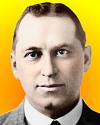 | The reason so many people never get anywhere in life is because when opportunity knocks, they are out in the backyard looking for four-leaf clovers. |
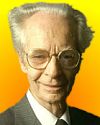 | A vast technology has been developed to prevent, reduce, or terminate exhausting labor and physical damage. It is now dedicated to the production of the most trivial conveniences and comfort. |
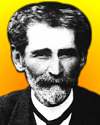 | As the proverb says, “You cannot fly like an eagle with the wings of a wren.” |
| Before you look at today's web page, see if you can answer some of these questions about the events that happened on this day. Some of the names are very familiar. Others will likely stump you. Tickle your curiosity with these questions, then check your answers on today's web page. | |
| Births | |
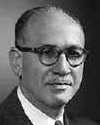 | Bern Dibner, born 18 Aug 1897, was a Ukrainian-American engineer and historian of science. Dibner worked as an engineer during the electrification of a certain island country. Realizing the need for improved methods of connecting electrical conductors, in 1924, he founded the Burndy Engineering Company. Later, he began collecting books and everything he could find that was related to the history of science. This became a second career as a scholar In which country was he working as an engineer for its electrification? |
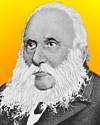 | Pierre-Émile Martin, born 18 Aug 1824, was a French engineer who co-invented the (now obsolete) open-hearth process, which produced most of the world’s steel until the development of the basic oxygen process. With whom did he coinvent this process, which is known by both their names? |
| Deaths | |
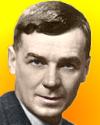 | Richard Synge (1914-1994) was a British biochemist who shared the 1952 Nobel Prize for Chemistry with A.J.P. Martin for their development of partition chromatography. Which simplest form of this chromatography was developed? |
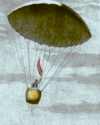 | André-Jacques Garnerin (1769-1823) was a French aeronaut, the first person to use a parachute regularly and successfully. He perfected the parachute and made jumps from greater altitudes than had been possible before. On 22 Oct of a certain year, Garnerin made his first jump above the Parc Monceau in Paris. From what height did he make his first parachute jump? |
| Events | |
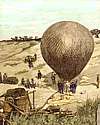 | On 18 Aug of a certain year, trying to deal with extreme drought, the first rainmaking experiments in the U.S. were conducted near Midland, Texas. They were paid for by a grant from the U.S. government. Patent attorney Gen. Robert Dyrenforth tried using explosive balloons and artillery to try to make rain clouds develop. In what decade did this take place? |
 | On 18 Aug 1868, Pierre Janssen discovered a previously unknown bright yellow line in the spectrum of the chromosphere of the sun during a solar eclipse he was observing from India. This was an indication of a new element. For over 30 years, it was assumed the element was only present in the sun. The spectral line was not observed in the lab until 1895 when Sir William Ramsay examined a substance from cleveite. What name was given to this new element? |
Fast answers for the previous newsletter for August 17: non-smear (“stays on you not on him”) kissproof lipstick that stayed on the lips longer than any other product then available • malignant disease of lymph tissue • first plane to break the sound barrier • James Watt • the decade including 1896 • Phobos.
 If you enjoy this newsletter, the website, or wish to offer encouragement or ideas, please send feedback by using your mail reader Reply button.
If you enjoy this newsletter, the website, or wish to offer encouragement or ideas, please send feedback by using your mail reader Reply button. Your click on a Facebook, StumbleUpon, or other social button on the site webpages is also a welcome sign of appreciation. Thank you for using them.
© This newsletter is copyright 2020 by todayinsci.com. Please respect the Webmaster's wishes and do not put copies online of the Newsletter — or any Today in Science History webpage. (If you already have done so, please remove them. Thank you.) Offline use in education is encouraged such as a printout on a bulletin board, or projected for classroom viewing. Online, descriptive links to our pages are welcomed, as these will provide a reader with the most recent revisions, additions and/or corrections of a webpage. For any other copyright questions, please contact the Webmaster by using your mail reader Reply button.
--
If you do not want to receive any more newsletters, Unsubscribe
To update your preferences and to unsubscribe visit this link
Executive Real Estate Business Class
-
"It was like a man with wings. It wasn't like anything you'd see on TV or in a monster movie." ...
About the publisher
Search This Blog
Blog Archive
-
▼
2020
(1542)
-
▼
August
(192)
- HISTORY: Lessons from the latest March on Washington
- New This Week on History News Network
- Discover lost cities with Nat Geo History. Subscri...
- On This Day for August 31 - Confederates evacuated...
- Newsletter for Monday 31 August.
- Face Masks Make you dumb (compliant) Economic des...
- August 31: Malaya Gains independence, Princess Dia...
- FAMILY: How to get your kid to wear a mask
- Roman numerals | Ancient empires | The battle of C...
- On This Day for August 30 - Historic spaceflight b...
- Newsletter for Sunday 30 August.
- August 30: Crossbow Outlawed, Nehru Requests Indep...
- The Compass: London
- On This Day for August 29 - New Orleans hit by Hur...
- Newsletter for Saturday 29 August.
- August 29: Treaty of Nanking, Second Battle of Bul...
- CORONAVIRUS UPDATE: These promising treatments are...
- PHOTOGRAPHY: Lives that matter, from the pietà to ...
- The Horrifying True Story Behind "Candyman," The Y...
- The Roundup Top Ten from History News Network
- On This Day for August 28 - Civil rights march on ...
- Newsletter for Friday 28 August.
- August 28: Tom Thumb Races a Horse, Scientific Ame...
- ANIMALS: When baby wombats become your roommates
- Give your kids the world! Subscribe now.
- Create remote resiliency with Britannica Kids
- On This Day for August 27 - The death of Titian, M...
- Newsletter for Thursday 27 August.
- Lockdown for you but not for the politically corre...
- August 27: Krakatoa Erupts and the End of Lord Mou...
- YOUR WEEKLY ESCAPE: Inside the world of transhuman...
- SCIENCE: Behind the hurricanes, wildfires, and bla...
- Demystified: What Does Gaslighting Mean?
- The Latest News from History News Network
- On This Day for August 26 - Joan of Arc's arrival ...
- Newsletter for Wednesday 26 August.
- Fear fatigue is more dangerous than COVID-19 plus
- August 26: Longbows, Cannons and Morris Mini-Minors
- For Your Eyes Only: America’s Spying Secrets
- 50+ Vintage Pictures Of Your Parents Being Cooler ...
- TRAVEL: Waiting for a silver lining
- On This Day for August 25 - Paris liberated, Sean ...
- Newsletter for Tuesday 25 August.
- August 25: French Arrive in Louisiana, James Cook ...
- HISTORY: Why the U.S. Postal Service matters
- Even Life-Long Learners Need Back-to-School Savings!
- Experience a 360-degree virtual tour of the Nat Ge...
- New This Week From History News Network
- On This Day for August 24 - Eruption of Mount Vesu...
- Newsletter for Monday 24 August.
- GeoEngineering Massive Drought WildFires + More Ma...
- August 24: Alaric I Sacks Rome, British Capture Wa...
- FAMILY: How you can support your kid's teachers—an...
- Genghis Khan | Edward the Confessor | The Spanish ...
- On This Day for August 23 - William Wallace execut...
- Newsletter for Sunday 23 August.
- August 23: 1st US Women's Rights Convention, Bin L...
- The Compass: U.S. National Parks
- On This Day for August 22 - Wars of the Roses ende...
- Newsletter for Saturday 22 August.
- August 22: Wars of the Roses Ends, Chennai Founded...
- CORONAVIRUS UPDATE: Your employer could require yo...
- PHOTOGRAPHY: Capturing a muted Russia
- The Unsung Heroes Who Fought For Women's Voting Ri...
- The Roundup Top Ten from History News Network
- On This Day for August 21 - French defeated at the...
- Newsletter for Friday 21 August.
- YOUR WEEKLY ESCAPE: A million people live in under...
- August 21: Mona Lisa is Stolen, the 50th US State ...
- ANIMALS: Soft and virus-y, the mink with COVID-19
- On This Day for August 20 - Viking 1 launched, Eer...
- Total Exposé! Watch the 2nd Plandemic Movie "InDoc...
- Newsletter for Thursday 20 August.
- August 20: The Dutch East India Company, Sun Yat-s...
- A Champion Will Be Crowned on 'Forged in Fire' Ton...
- SCIENCE: The robots have arrived
- The Latest News from History News Network
- On This Day for August 19 - Attempted coup against...
- Newsletter for Wednesday 19 August.
- August 19: Cease-Fire in the Iran-Iraq War and Gor...
- TRAVEL: Will new tech make flying safer now?
- Sail along with Ancient Explorers w/ Nat Geo History!
- On This Day for August 18 - Nineteenth Amendment r...
- Newsletter for Tuesday 18 August.
- August 18: Wilson's Ill-fated Neutrality, American...
- HISTORY: Breaking 'substantial barriers' with Kama...
- New This Week On History News Network
- On This Day for August 17 - Indonesia's declaratio...
- Newsletter for Monday 17 August.
- State of Tennessee orders Home visit checks on ALL...
- August 17: Division of Korea, Indonesian Independe...
- FAMILY: Preparing for this unusual school year
- Medieval baby names | Attila the Hun | Pederasty i...
- On This Day for August 16 - Leonel Fernández Reyna...
- Newsletter for Sunday 16 August.
- August 16: Deadly Chaos in Calcutta and the Last C...
- The Compass: New Zealand
- On This Day for August 15 - Independence for India...
- Newsletter for Saturday 15 August.
- August 15: The Mayflower Sets Sail, Indian Indepen...
-
▼
August
(192)
-
Blogroll
-
About
HistoryFact










0 comments:
Post a Comment